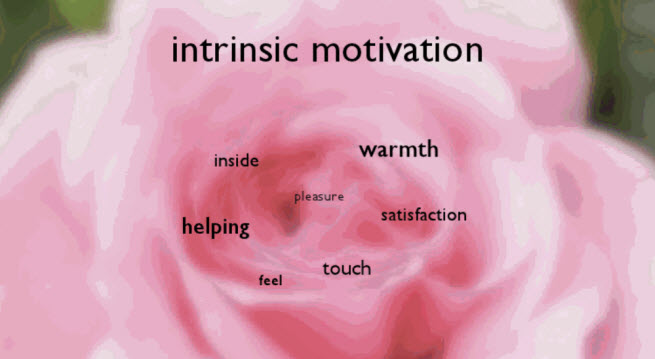For decades, the dominant theme in video games has been violence. That’s not surprising, since violent competitions have been dominant in culture for thousands of years. But it doesn’t have to be that way. Video games can be about love, emotion, and positive motivation, according to a panel of game developers who are trying to make all of that happen.
[aditude-amp id="flyingcarpet" targeting='{"env":"staging","page_type":"article","post_id":399826,"post_type":"story","post_chan":"none","tags":null,"ai":false,"category":"none","all_categories":"games,","session":"C"}']Their goal is to start a conversation about “how to create more love with our art,” said Jane McGonigal, a veteran game developer at Social Chocolate and co-moderator of the panel. She is well-known as the author of the book Reality Is Broken: Why games make us better and how they can change the world.
“This is about what games could be,” McGonigal (pictured far right) said.
The speakers are also part of a group of researchers, known as the Digital Romance Lab, that is working on games that have to do with love, romance, and flirting. They’re not talking about sex, or porn, per se. Led by Jane Pinckard, who co-moderated the panel at the GDC, the Digital Romance Lab has done things like collect the most romantic moments in video games in the past year. Pinckard is associate director of the Center for Games and Playable Media at the University of California at Santa Cruz.
Molinari said, “You have to first have something, before you lose. So knowing that, the whole game builds up to this moment of loss.”
People who played the game reacted very emotionally to it.
Howe, design director at Super Better Labs, said the science behind emotion shows that when you feel an emotion, you spread it to six people. In a day, you can affect more than 250 people.
[aditude-amp id="medium1" targeting='{"env":"staging","page_type":"article","post_id":399826,"post_type":"story","post_chan":"none","tags":null,"ai":false,"category":"none","all_categories":"games,","session":"C"}']
“How do you figure that out and stick that in a game?” Howe asked.
When you affect a player with emotion in a game, you can make an impact on more than 250 people.
One way is simply to give players a way to communicate and enable them to “project themselves into a space that we leave open for them.” Super Better Labs did this with a “secret wall” that players could find and then use to talk to each other.
If love is defined (by psychology professor Barbara Fredrickson) as a “shared positive emotion,” then sharing of games and sharing in games is a way to bring love into them. Howe said some of her favorite games that did this were Ecco the Dolphin, Flower, and Mirror’s Edge. With these games, Howe said, she felt full of hope and wonder while she was playing them.
[aditude-amp id="medium2" targeting='{"env":"staging","page_type":"article","post_id":399826,"post_type":"story","post_chan":"none","tags":null,"ai":false,"category":"none","all_categories":"games,","session":"C"}']
Martin Hollis (pictured center), a former hardcore game designer who is co-founder of the Digital Romance Lab, said the 5,000-year-old Royal Game of Ur, the oldest board game in the world, was about dominating others. On the panel, he said that Jon von Neumann, the computing pioneer, argued that in game theory, zero sum games mean there are only winners and losers. You might conclude that games are always competitive, alway confrontational.
But Hollis said John Nash, the mathematician depicted in the film A Beautiful Mind, argued that there was another kind of strategy, dubbed non-cooperative equilibrium, where cooperation in games can pay off for the good of all. Hollis also mentioned that actress Eva Gabor said, “Love is a game that two can play and both win.”
Hollis said he hopes that a “change is in the air” regarding the romantic genre in video games — a genre that currently doesn’t exist. Perhaps, he said, we can look back on this moment in 5,000 years and view it as a turning point for love games. He thinks it would be cool to make matchmaking games where you can test whether people are a good match or not. He thinks such games could give some intrinsic motivation, or pleasure from within, by being a skilled matchmaker in a “match two” game.
“Games have been about war for thousands of years. Why not change them?” he asked. “Make love games normal. Maybe then, in 5,000 years, half the games will be about war, and half about love.”
[aditude-amp id="medium3" targeting='{"env":"staging","page_type":"article","post_id":399826,"post_type":"story","post_chan":"none","tags":null,"ai":false,"category":"none","all_categories":"games,","session":"C"}']
Scott Brodie, founder of Heartshaped Games in Kirkland, Wash., sent a recording because he wasn’t able to be at the panel in person, since his wife was having a baby. His game was Hero Generations, where a lifetime lasts five minutes. In that time, you have to choose a mate, choose when to have a family, and then end your heroic adventures. You can build things like farms and roads that the next hero who succeeds you can take advantage of. The hero has to invest time with his or her family and make sacrifices while seeking individual goals.
You can design a game to influence how people view the world, he said. If you change one player at a time, you can change the world.
Mitu Khandaker (pictured second from right), an indie game developer and researcher at the University of Portsmouth in the United Kingdom, said that love is a very diverse thing and that it takes a lot of thought to figure out which part of it you want to depict in a game.
“How do you model the experience of love? Any one couple?” Khandaker said.
[aditude-amp id="medium4" targeting='{"env":"staging","page_type":"article","post_id":399826,"post_type":"story","post_chan":"none","tags":null,"ai":false,"category":"none","all_categories":"games,","session":"C"}']
At the Digital Romance Lab, she worked on a game with robots. In the game, one robot had to search for another robot and find a companion. That led to the game Redshirt, currently under development in the U.K. The game lets you schmooze your way through social circles and claw your way up the career ladder.
McGonigal said, “Let’s see a love game nominated for the awards next year, or featured in a keynote.”

